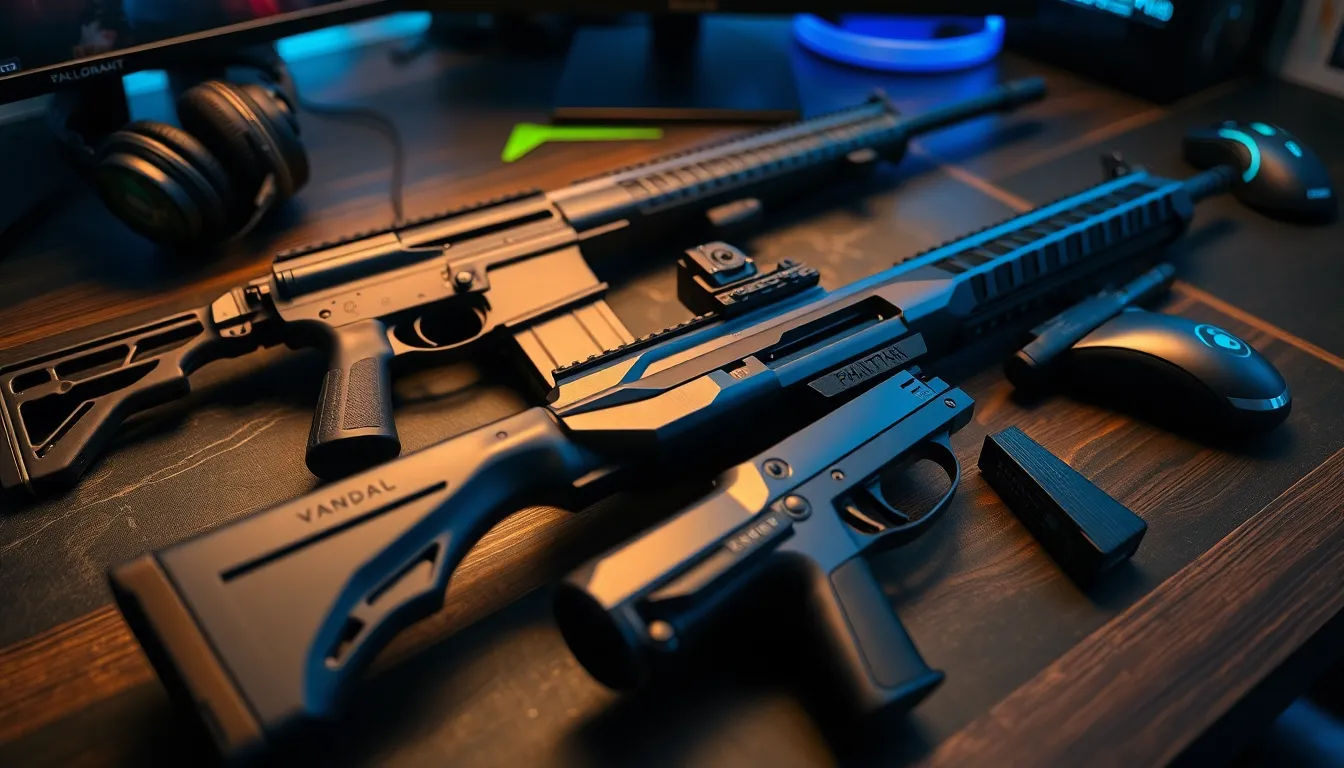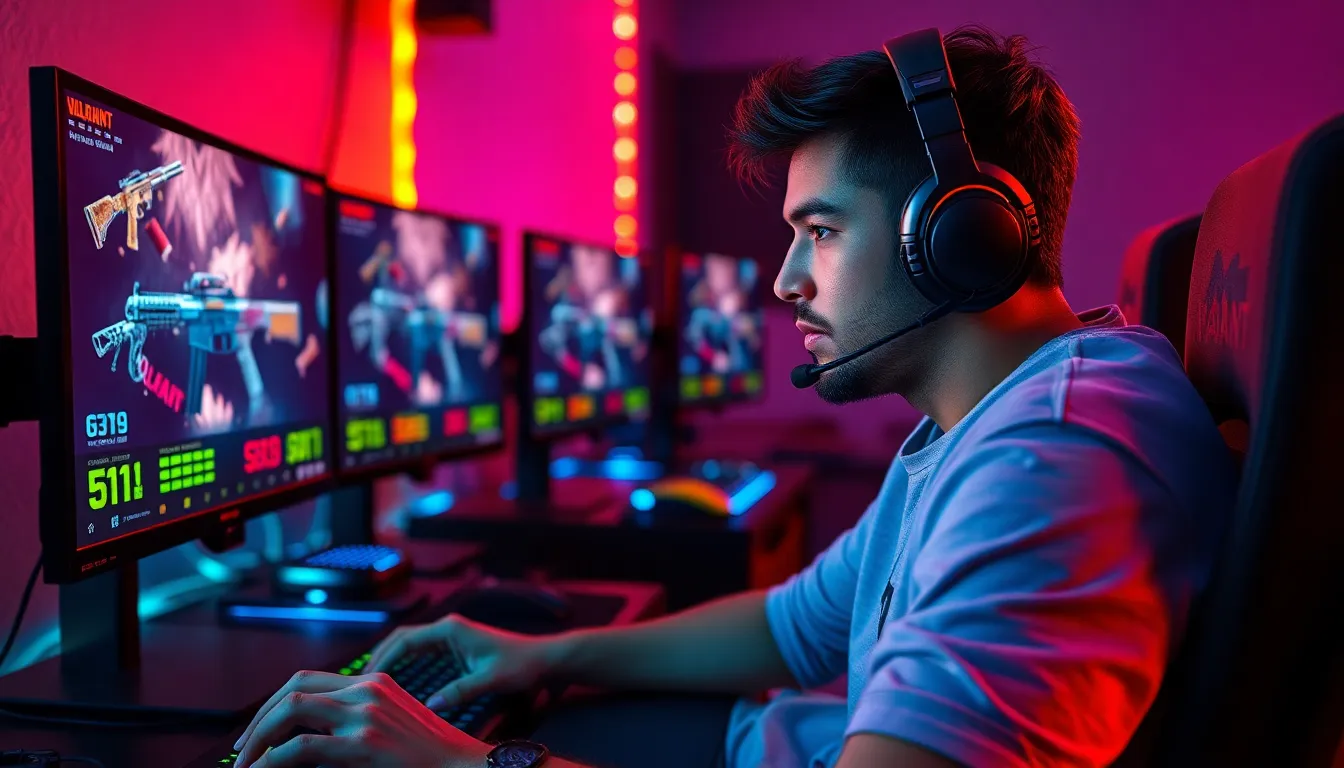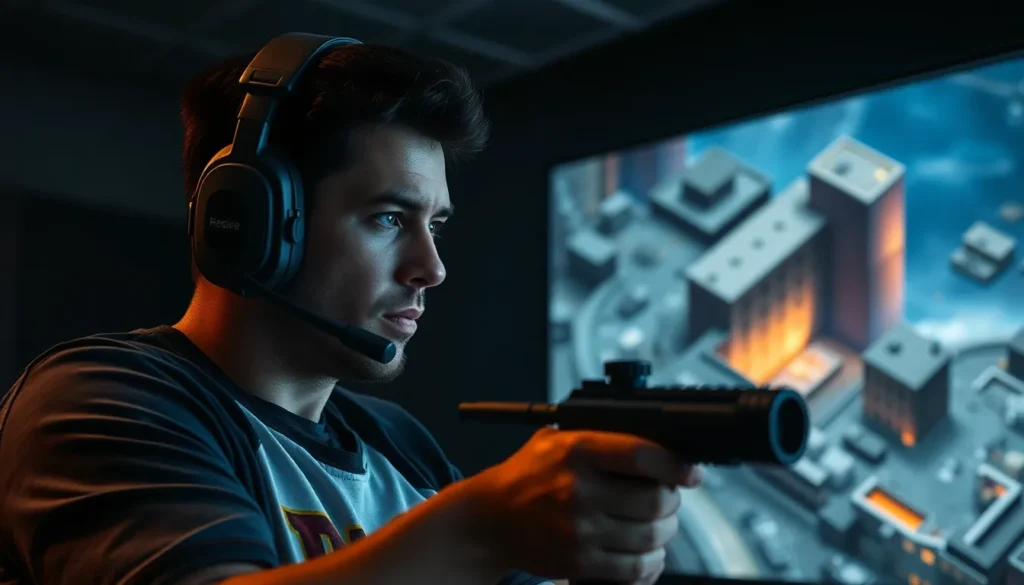Table of Contents
ToggleIn the fast-paced world of Valorant, every shot counts, and knowing the fire rate of your weapon can mean the difference between a glorious ace and a humbling defeat. Picture this: you’re in the heat of battle, adrenaline pumping, and your trusty rifle feels like a water gun. Understanding fire rates isn’t just for stats nerds; it’s crucial for anyone looking to dominate the competition.
Whether you’re a seasoned pro or a newbie still figuring out the difference between a spike and a grenade, mastering fire rates can give you the edge. It’s like having a cheat code—except it’s totally legit. Dive into the nitty-gritty of fire rates, and watch your gameplay transform from “oops, I missed” to “did you see that?” Get ready to unleash your inner sharpshooter and turn those bullets into pure gold.
Understanding Valorant Fire Rate
Understanding fire rate plays a crucial role in mastering Valorant’s gameplay dynamics. Knowledge about fire rates influences decision-making during combat situations.
Definition of Fire Rate
Fire rate refers to the number of rounds a weapon can fire within a specific time frame, typically measured in rounds per minute (RPM). Each weapon in Valorant has a distinct fire rate, which affects its effectiveness in different combat scenarios. For example, rifles like the Vandal and Phantom boast higher fire rates compared to shotguns and snipers. Players must familiarize themselves with these statistics to optimize their weapon selection based on their play style.
Importance of Fire Rate in Gameplay
Fire rate significantly impacts overall gameplay and tactical decisions. Rapid-fire weapons enable players to quickly suppress enemies and control engagements, while slower-firing weapons excel in precision shots. Effective use of fire rate ensures successful duels, especially in high-stakes situations. Players selecting weapons with appropriate fire rates based on situations can secure victories more consistently. Recognizing the nuances of fire rates helps players improve accuracy and positioning, ultimately enhancing performance in various matches.
Overview of Weapons and Their Fire Rates

Understanding weapon fire rates deepens gameplay strategy in Valorant. Players benefit from knowing the specifics of each weapon’s capabilities.
Primary Weapons
Primary weapons deliver crucial firepower during engagements. The Vandal features a fire rate of 9.75 rounds per second, making it effective for precise shots. The Phantom, on the other hand, has a quicker rate of 11 rounds per second, excelling in close to mid-range battles. Players often choose between these rifles based on their preference for accuracy or rapid-fire capabilities. Meanwhile, the Guardian operates at 6.75 rounds per second, reinforcing its role as a precision-oriented weapon. This variety in fire rates influences how players approach combat situations.
Secondary Weapons
Secondary weapons serve as vital backups during gameplay. The classic pistol fires 6 rounds per second, providing a reliable option in tight spots. The shorty, with a unique burst style, can fire at a rate of 3 rounds per second, proving advantageous in close-range encounters. Meanwhile, the frenzy boasts a rapid rate of 13 rounds per second, allowing for quick shots in frantic situations. Each secondary weapon’s fire rate affects how players manage engagements, making informed selection essential. Understanding these options enhances overall performance.
Sniper Rifles
Sniper rifles bring a different dynamic to weapon selection in Valorant. The operator fires just 0.33 rounds per second, emphasizing accuracy over speed. This significant delay demands precise aim to capitalize on its high damage output. The marshal, on the other hand, features a faster fire rate of 1.33 rounds per second, balancing speed with power. Players using sniper rifles must consider positioning since these weapons require careful targeting. Knowledge of fire rates for snipers enhances strategic play, ensuring effective use in various scenarios.
Factors Affecting Fire Rate
Understanding the factors that influence fire rate enhances players’ strategic choices in Valorant. Several key aspects determine how effectively a player can execute their tactics in-game.
Weapon Type
Different weapon types exhibit distinct fire rates. Rifles deliver higher fire rates, making them suitable for aggressive play styles. For instance, the Vandal fires at 9.75 rounds per second, while the Phantom reaches 11 rounds per second. Conversely, shotguns and sniper rifles have lower fire rates, promoting precision over volume. The Operator, at just 0.33 rounds per second, emphasizes careful aim and positioning. Players must select weapons based on their preferred engagement style to optimize performance.
Modifications and Attachments
Modifications and attachments play a significant role in adjusting fire rates. Specific attachments, such as suppressors or compensators, can alter how quickly a weapon fires and its recoil behavior. For example, a barrel attachment may improve bullet stability while slightly reducing fire rate. Players often utilize modifications to enhance weapon performance, adapting to various situations effectively. Understanding the interactions between weapons and their attachments helps players maximize combat advantages.
Player Skill and Technique
Player skill and technique greatly influence how effectively one can utilize fire rate. Experienced players often control recoil better, allowing quicker follow-up shots. Timing in shooting also affects overall effectiveness; players can benefit from firing in short bursts rather than continuous fire for improved accuracy. It’s common for skilled players to master techniques like tapping or bursting to maintain precision. Adapting techniques to complement weapon fire rates leads to enhanced gameplay performance in Valorant.
Strategies for Utilizing Fire Rates Effectively
Understanding fire rates can enhance your gameplay strategy. Players should focus on methodical approaches to weapon usage, which can lead to more effective engagements.
Burst Fire vs. Automatic Fire
Choosing between burst fire and automatic fire requires an understanding of weapon attributes. Burst fire enables players to deliver controlled shots, increasing accuracy during engagements. This technique suits weapons like the Vandal, where precision is critical. Automatic fire, on the other hand, is ideal for suppressing enemies and maintaining pressure in firefights. Weapons like the Phantom excel in this area, allowing players to apply rapid fire to control areas or disorient opponents. Recognizing the strengths of each firing style can impact decision-making within matches.
Timing and Control
Mastering timing and control plays a significant role in optimizing fire rates. Players need to learn when to shoot and when to hold fire, particularly during critical moments of engagement. Effective timing ensures that players don’t waste bullets while maximizing damage output. The control of recoil becomes vital when using automatic weapons, as maintaining accuracy during sustained fire can change a match’s outcome. Practicing fire control through techniques like tapping or short bursts allows players to maintain precision while adjusting to the situation—prioritizing placement over sheer volume of fire can lead to more successful encounters.
Understanding fire rates in Valorant is a game-changer for players aiming to elevate their performance. Mastering these rates not only enhances shooting accuracy but also informs strategic decisions during gameplay. By recognizing the distinct characteristics of various weapons and their fire rates, players can adapt their strategies to suit different combat scenarios.
Whether opting for rapid-fire weapons for aggressive plays or precision weapons for careful engagements, knowledge of fire rates is crucial. Players who practice effective fire control techniques will find themselves gaining a significant edge in matches. Ultimately, embracing the intricacies of fire rates can transform a player’s overall experience, leading to improved skills and greater success on the battlefield.




